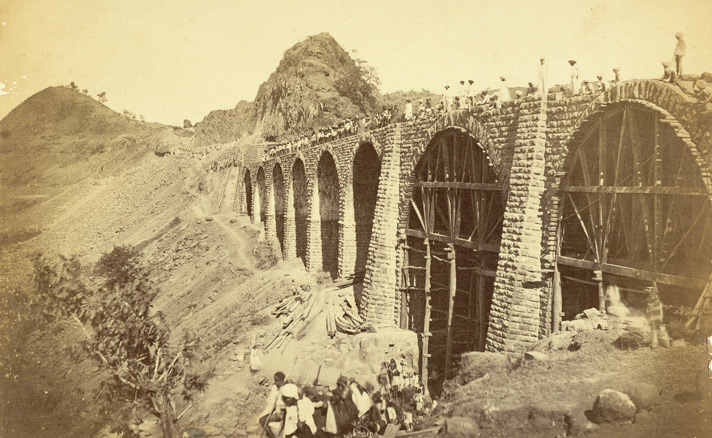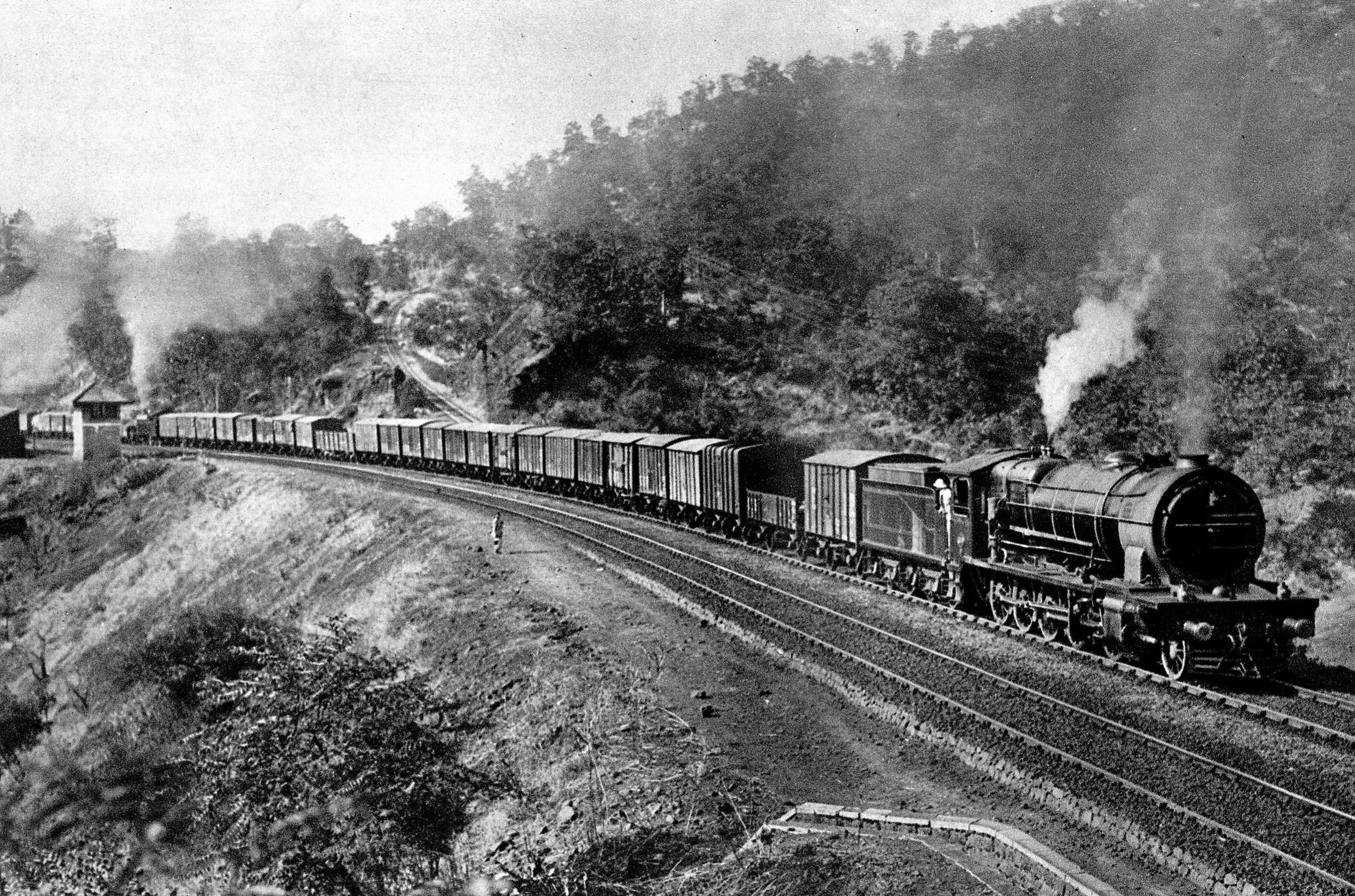


photograph of a view of the Bhore Incline, near Bombay from the 'Vibart
Collection of Views in South India' taken by an unknown photographer
about 1855. India’s vast railway network is an enduring legacy of the
East India Company. In 1853 there were 32kms of tracks, whereas by 1948
there were nearly 50,000kms. The railway connecting Thana through the
Thal and Bhor Ghat inclines was the initiative of George Clark, Chief
Engineer of the Bombay Government. The Great Indian Peninsula Railway
Company developed the scheme in the 1840s and the Bhor Ghat pass was
opened in 1861 as the main route over the Western Ghats linking the sea
coast with the Deccan.



Khandalla from the Tank; railway cutting; Delmont and Elphinstone Point; at 13 miles

REVERSING STATION, BHORE GHAT INCLINE, G. I. RAILWAY. from the Article RAILWAY LOCATION AND SURVEYS IN RAJPUTANA, INDIA. By C. H. Croudace. from The Engineering Magazine Devoted to Industrial Progress Volume XVI October 1898 - March 1899 The Engineering Magazine Co Rājputana, meaning Land of the Rajputs, was a region in the Indian subcontinent that included mainly the present-day Indian state of Rajasthan, as well as parts of Madhya Pradesh and Gujarat, and some adjoining areas of Sindh in modern-day southern Pakistan.
Captions are provided by our contributors.

Bhore ghat incline




